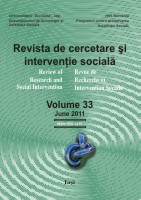Socio-economic factors and hygienic food-illness involved in determining dental caries of 12-year-old children in rural and urban area
Socio-economic factors and hygienic food-illness involved in determining dental caries of 12-year-old children in rural and urban area
Author(s): Cornel Gh. Boitor, Alina Pitic, Anca Frăţilă, Liana Stanciu, Ana Maria AcuSubject(s): Social Sciences
Published by: Editura Lumen, Asociatia Lumen
Keywords: rural area; urban area; socio-economic factors; the risk of caries; 12 years old.
Summary/Abstract: Age of 12 is considered in most current research, reference age influencing both the incidence and intensity of dental caries and harmonious development of the dento - jaws of life of future periods. Two groups of students 12 years old, were studied, living in rural and urban areas, which were examined by a dentist and then they were questioned about the dental control method. The children’s parents were also asked to complete a questionnaire on maternal age at childbirth, mother’s education level, monthly family income, brushing supervision and control of children’s dentistry. The obtained data were registered in individual files and then centralized and statistically processed. Tags in rural areas have the following values: 89.6% caries frequency, intensity indicators DMF-T = 4.38, DMF-S = 9.11 and 6 year molars decayed percentage 69.44%. The values are the same indicators of urban decay rate 79.2%, DMF-T = 2.76, DMF-S = 5.69 and 6 year molars decayed percentage 30.55%. The study said that risk factors can act differently in rural areas where dental health problems are 1.48 higher than in urban areas. Regular dental check up, tooth brushing and effectively change your toothbrush every three months can significantly influence dental health at the age of 12 years in both environments.
Journal: Revista de Cercetare şi Intervenţie Socială
- Issue Year: 2011
- Issue No: 33
- Page Range: 167-177
- Page Count: 11
- Language: English
- Content File-PDF

